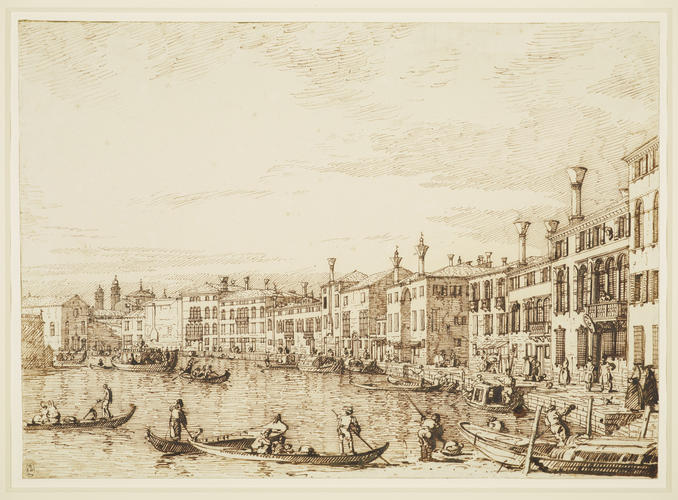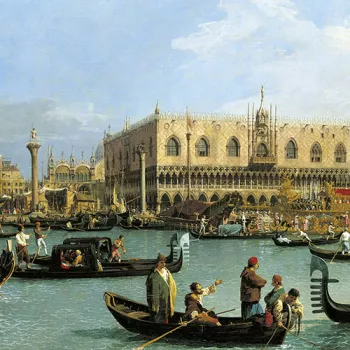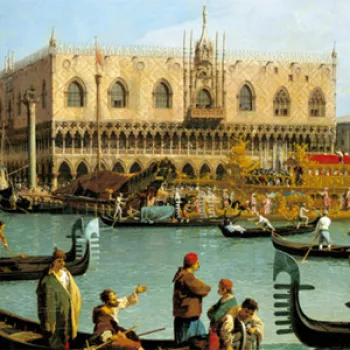Venice: The upper reach of the Grand Canal, looking south c. 1734
Pen and ink, over ruled and a little free pencil and pinpointing | 27.0 x 37.8 cm (sheet of paper) | RCIN 907473
-
A drawing of an upper section of the Grand Canal in Venice. On the left is the façade of Santa Croce. On the far right is the house of the British Secretary-Resident in Venice, identified by the oval sign above the door.
The view is taken from the centre of the upper end of the Grand Canal, looking south towards the sharp bend by Santa Croce. The Piazzale Roma vaporetto stop now occupies the right foreground of the view. The circular sign attached to the balcony at near right marks the house of the British Secretary-Resident (not to be confused with the Consul). Only one other building along the waterfront survives, the seven-bay palazzo in the centre distance, from where Canaletto took the view of the preceding drawing. The windowless façade with an external chimneybreast lies where the Rio Nuovo, opened in 1933, now gives onto the Grand Canal. At the left of the composition is the church of Santa Croce (with two arched windows above the lateral doors). Beyond is the tribune and belltower of San Nicolò da Tolentino, and just to the left, shown larger than in reality and thus appearing too close, the belltower of the Frari. At far left is the corner of the convent wall of Corpus Domini.
The history of the composition is more than usually complicated. Canaletto’s studies in the Sketchbook show this stretch of canal from further north, with more buildings to the right and Santa Croce hidden behind the convent wall, and that view was the basis for paintings in the Woburn Abbey and Harvey groups. But here, perhaps wishing to show the façade of Santa Croce, Canaletto took a new viewpoint to the south, sketched on both sides of another sheet in the Royal Collection dated 16 July 1734 (RL 7489). From this new composition derived paintings in the Wallace Collection and the Musée Cognacq-Jay, Paris; the Paris version. was the basis for Visentini’s engraving in the 1742 Prospectus. Bellotto reproduced the drawing twice, once faithfully, the second time enlarging the distant buildings and changing the foreground boats.
Catalogue entry adapted from Canaletto in Venice, London, 2005Provenance
Purchased by George III from Consul Joseph Smith, 1762
-
Medium and techniques
Pen and ink, over ruled and a little free pencil and pinpointing
Measurements
27.0 x 37.8 cm (sheet of paper)
Other number(s)
RL 7473










